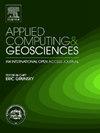Enhancing Indian summer monsoon prediction: Deep learning approach for skillful long-lead forecasts of rainfall
IF 3.2
Q2 COMPUTER SCIENCE, INTERDISCIPLINARY APPLICATIONS
引用次数: 0
Abstract
The prediction of the Indian summer monsoon rainfall (ISMR) in the June–September (JJAS) season at long-lead times is challenging. The state-of-the-art dynamical models often fail to capture the sign and amplitude of the rainfall anomalies in the extreme rainfall seasons, limiting the overall skill of the models. We attempted to address this issue using a deep learning model based on convolutional neural networks (CNN). An ensemble of JJAS rainfall predictions using the CNN model with a unique custom function showed high skills in predicting ISMR at a long-lead time of 12 months. The predictions had an anomaly correlation coefficient (ACC) exceeding 0.5 at all the lead times from 2 to 17 months. The CNN model predictions could capture the sign and phase of the extreme rainfall events in the study period realistically. Analysis of saliency-based heatmaps indicated the high skill to be due to the model capturing the leading modes of climate variability, such as the Indian Ocean Dipole and El Niño-Southern Oscillation, realistically. The ensemble of CNN ISMR predictions can supplement the predictions of the forecasting centers.
加强印度夏季风预测:深度学习方法用于熟练的长期降雨预测
6 - 9月(JJAS)季节的印度夏季季风降雨(ISMR)的长期预测是具有挑战性的。最先进的动力模式往往不能捕捉极端降雨季节降雨异常的信号和幅度,限制了模式的整体技能。我们尝试使用基于卷积神经网络(CNN)的深度学习模型来解决这个问题。使用CNN模型和独特的自定义函数的JJAS降雨预测集合显示出在12个月的长提前期预测ISMR的高技能。2 ~ 17个月的预测异常相关系数(ACC)均大于0.5。CNN模型预测能够真实地捕捉研究时段极端降雨事件的信号和阶段。对基于显著性的热图的分析表明,高技能是由于该模式实际捕获了气候变率的主要模式,如印度洋偶极子和El Niño-Southern振荡。CNN ISMR预测集合可以补充预报中心的预测。
本文章由计算机程序翻译,如有差异,请以英文原文为准。
求助全文
约1分钟内获得全文
求助全文
来源期刊

Applied Computing and Geosciences
Computer Science-General Computer Science
CiteScore
5.50
自引率
0.00%
发文量
23
审稿时长
5 weeks
 求助内容:
求助内容: 应助结果提醒方式:
应助结果提醒方式:


